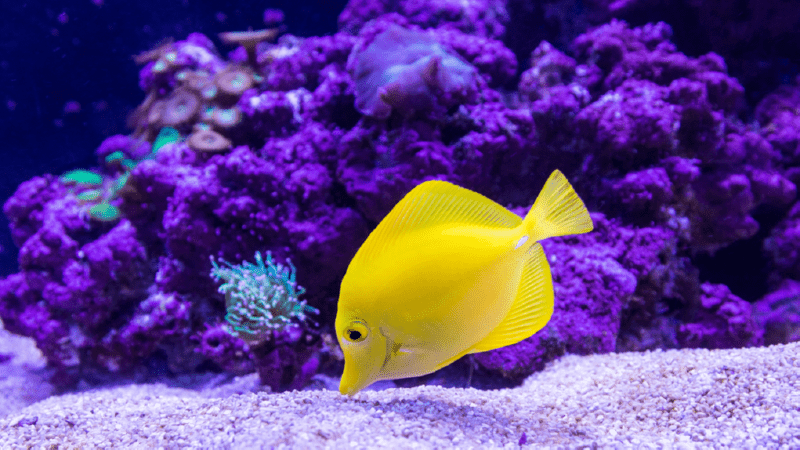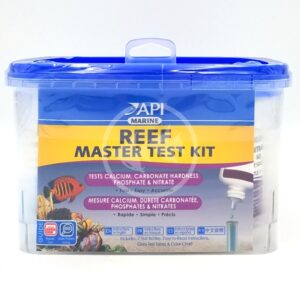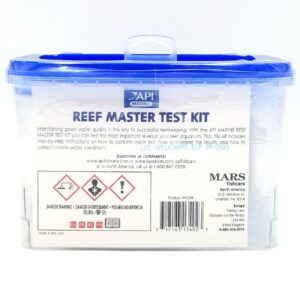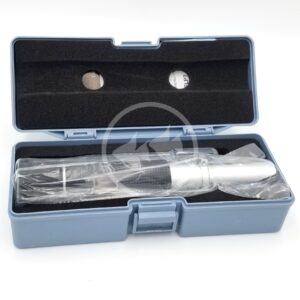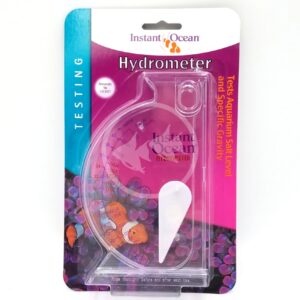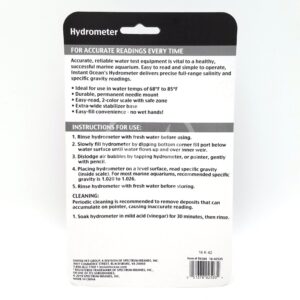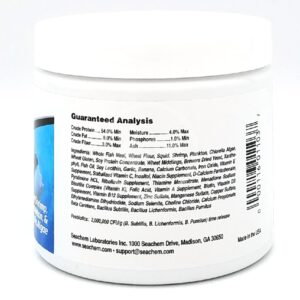You may have been told that saltwater aquariums are “difficult to maintain.” For starters, many of you may have experience in freshwater before wanting to give saltwater a try. While it is helpful that you have established knowledge from keeping freshwater, some new skills and methodology will have to be learned in order to maintain a successful saltwater aquarium. It is true that many saltwater fish are less forgiving than hardier, tropical freshwater fish.
This guide will hopefully answer some of your general questions about what it really takes to set up and keep a thriving saltwater aquarium. There is such diversity in the species of saltwater fish, so do not hesitate to call, email, or ask an employee if you have more specific questions!
What is the difference between saltwater and freshwater?
Simply speaking, saltwater has a specific concentration of dissolved salt that is maintained. Salinity (the amount of salt in the water) must be monitored and kept stable. Different instruments, like a hydrometer, are required to know where your desired levels are.
WHAT ORDER SHOULD I DO THINGS?
- OBTAIN TANK & ESSENTIAL EQUIPMENT
- Tank
- Stand
- Lid
- Light
- Heater
- Filter
- Hydrometer
- Thermometer
- Crushed coral (substrate)
- Base rock (optional)
- Dechlorinator (if using tap water)
- Test kit (ideal for convenience)
- Salt (not required with our pre-mixed water)
- SET UP TANK
Mixing your own batch of salt water takes 24 hours before it is ready. We recommend rinsing crushed coral beforehand to reduce the amount of time it makes your tank cloudy. Make sure your tank is at the desired temperature (76-78F). During this time, nothing “living” should be added including live rock, live sand, bacteria, or livestock. Once a few days have passed and your salinity is checking out at the level you want it to be, then you’re ready to take the next step.
- See our NEW TANK SYNDROME blog post for information regarding the nitrogen cycle.

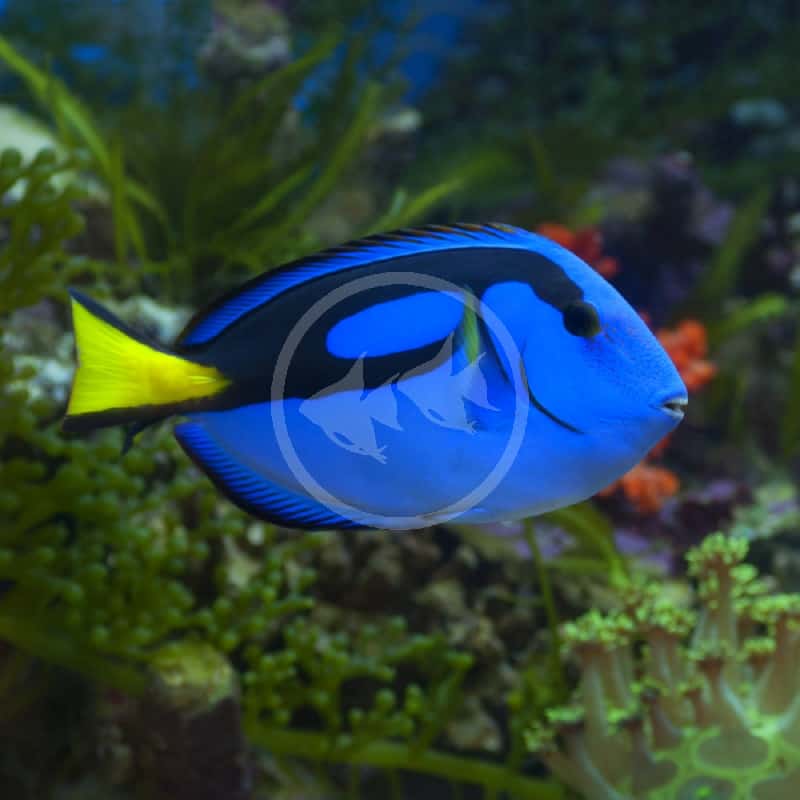
- LIVE ROCK
Saltwater set-ups should not have to go through a “standard nitrogen cycle” if you purchase live rock or a combination of liquid bacteria and live rock. Our live rock is ready to go with beneficial bacteria to help get your tank started off on the right foot, and it’s in an isolated system and cultured in-house to ensure that no hitchhikers will be added to your aquarium.
Live rock should only be added to your aquarium IF you are going to add your first, hardy fish along with it. You do not want to add live rock (or live sand) and then wait for your tank to “cycle.” Live rock requires the ammonia produced by fish (or dosed otherwise) to keep it thriving. We then recommend that you wait 4-6 weeks to monitor the fish and water chemistry. This will allow the bacteria to propagate onto other surfaces in your tank and stabilize it further.
Even though you may not see any issues with your water chemistry during this time, we do not recommend that you purchase any new inhabitants until 4-6 weeks of stable chemistry has gone by.
- ALGAE
Algae, especially in a newer system trying to establish itself, is normal. One of the first types of algae typically seen is diatom algae, which usually accumulates on the substrate. Other algae types you may encounter include algae spots on rocks and/or glass, hair algae, and lastly cyanobacteria (which is actually a bacteria that photosynthesize like algae). Cyanobacteria can be frustrating to get a grip on. Make sure you aren’t leaving your lights on excessively, check to see that nutrient (nitrate levels) are low, and that you have enough circulation in your aquarium.
If your tank is stabilized (cycled), a natural way to overcome cyanobacteria is by introducing Trochus or Margarita snails. Otherwise, we sell a product called Chemi-Clean that works effectively and is reef/fish safe. Algae eating fish/invertebrates may be introduced into your aquarium to control other algae types once your tank has been stable for at least 4-6 weeks.
SUPPLIES
Power filters, canister filters, and heaters used in freshwater can be used in a saltwater setup. It is worth your while to invest wisely in your equipment. Backups are encouraged to help you in a pinch. Additional equipment such as a UV-sterilizer, skimmer, power heads, top off tank, dosers, reactors, etc. can help simplify your aquarium maintenance. A hydrometer or a refractometer is used to measure the amount of salt in the tank.
WATER CHEMISTRY
Many saltwater fish are sensitive to water chemistry and therefore, it is necessary to keep parameters ideal. Depending on what avenue of the saltwater hobby you decide to take (e.g., fish only, reef tank) will differ which parameters you should be testing/checking. A bare minimum parameter that should be kept within reason for any tank is the nitrate level. Please speak with an associate if you would like more specific details as to which additional parameters should be your priority!
DRILLED TANK WITH SUMP?
Many customers want to dive right in. It is understandable that you would rather save yourself some money up front when you are initially making this expensive investment. Hang on filters or canisters can be less costly up front and less intimidating to set up, but can severely limit you down the road when you want to advance in the hobby and make some equipment upgrades. Many customers start to notice the advantages of this style only a few months after having started their tank. A sump is an additional tank that sits below your main display tank. Think of it as a canister filter without a lid. Maintenance is a breeze since it can be readily accessed, additional water volume is a huge plus, and the ability to slap on upgrades on a tank that you cannot even see, well that’s the icing on the cake.
MOST COMMON MISTAKES
The information given here is based on years of experience but there are always exceptions as every aquarium and hobbyist is unique. We understand it can be challenging to get a straight forward answer online, or that a statement we make may even contradict something you read on the internet. Everyone has their way of doing things and the internet often only provides a glimpse of a certain set up. Please feel free to discuss any of these topics with our staff; we’re always glad to help, open to discussion and perhaps learning ourselves!
– Adding fish too soon; in regard to when the tank was set up.
– Adding too many fish at once or too close at a time.
– Not quarantining a new arrival. (see our SALTWATER QUARANTINE blog post)
– Overfeeding/not changing water often enough.
– Overcrowding.
– Not feeding a variety of food and adding vitamins. (This can cause health issues & even death).
– Not fully understanding the maintenance involved to maintain the aquarium/proper environment.
Please see our SALTWATER CARE GUIDE blog post for more information regarding keeping a saltwater aquarium.


